8 People Who Made Their Dreams a Reality
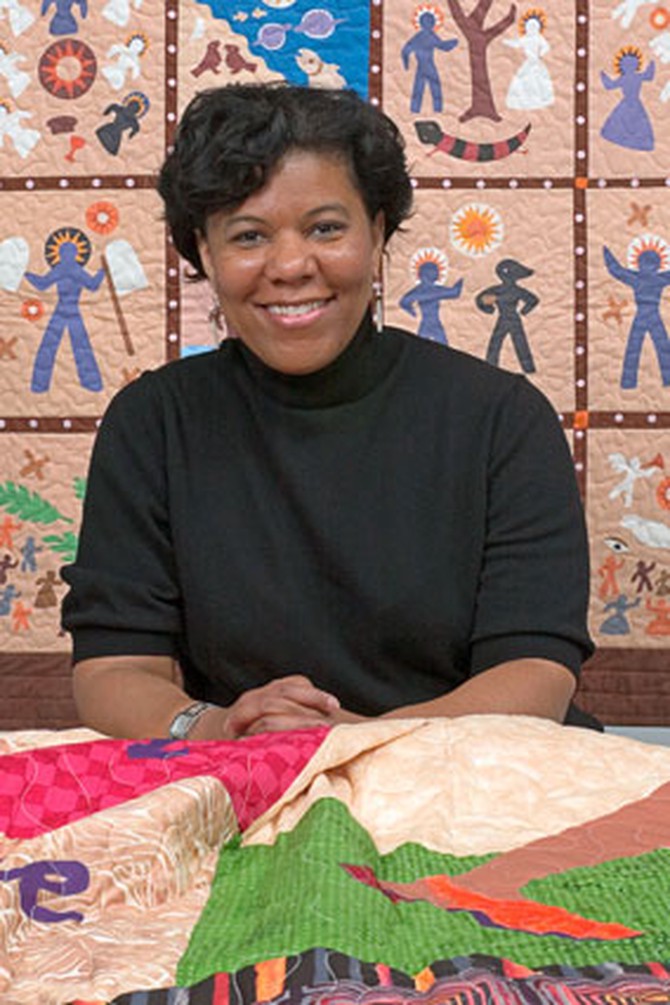
Photo: John Woo
The Quilter: Kyra Hicks
Twenty years ago, a friend and I were visiting the Taft Museum of Art in Cincinnati and saw an exhibit of African-American quilts. I'll never forget one particular piece by the artist Faith Ringgold—a family sitting at a Thanksgiving table, with their thoughts sewn into the fabric. I just knew right away: I wanted to tell stories with cotton.
It's exciting to start on a quilt. I tape paper to my wall and sketch patterns and notes. Going to the fabric store for the right colors or prints feels as important as the actual sewing. And then I clear out a huge empty space in my family room, and I get busy. I don't know how to draw, so it amazes me that this magical, creative part of me comes out.
Here's an example: A few years ago, when I was yearning for a date on a Friday night, I asked myself, "How can I capture this feeling in fabric?" So I made a quilt that reads "SBF praying for a SBM to share my quilt." The image is of a black woman, and if you look really closely, the background pattern is filled with couples. I love layering the story like that.
I probably couldn't make a living quilting, and I'm glad of that. My 9-to-5 job as a product manager means I don't have to make quilts to sell. There's a freedom to being pure to the art, to not being motivated to pay the mortgage with it. My quilts are motivated only by my need to tell my story. —As told to Margaret Rhodes
It's exciting to start on a quilt. I tape paper to my wall and sketch patterns and notes. Going to the fabric store for the right colors or prints feels as important as the actual sewing. And then I clear out a huge empty space in my family room, and I get busy. I don't know how to draw, so it amazes me that this magical, creative part of me comes out.
Here's an example: A few years ago, when I was yearning for a date on a Friday night, I asked myself, "How can I capture this feeling in fabric?" So I made a quilt that reads "SBF praying for a SBM to share my quilt." The image is of a black woman, and if you look really closely, the background pattern is filled with couples. I love layering the story like that.
I probably couldn't make a living quilting, and I'm glad of that. My 9-to-5 job as a product manager means I don't have to make quilts to sell. There's a freedom to being pure to the art, to not being motivated to pay the mortgage with it. My quilts are motivated only by my need to tell my story. —As told to Margaret Rhodes
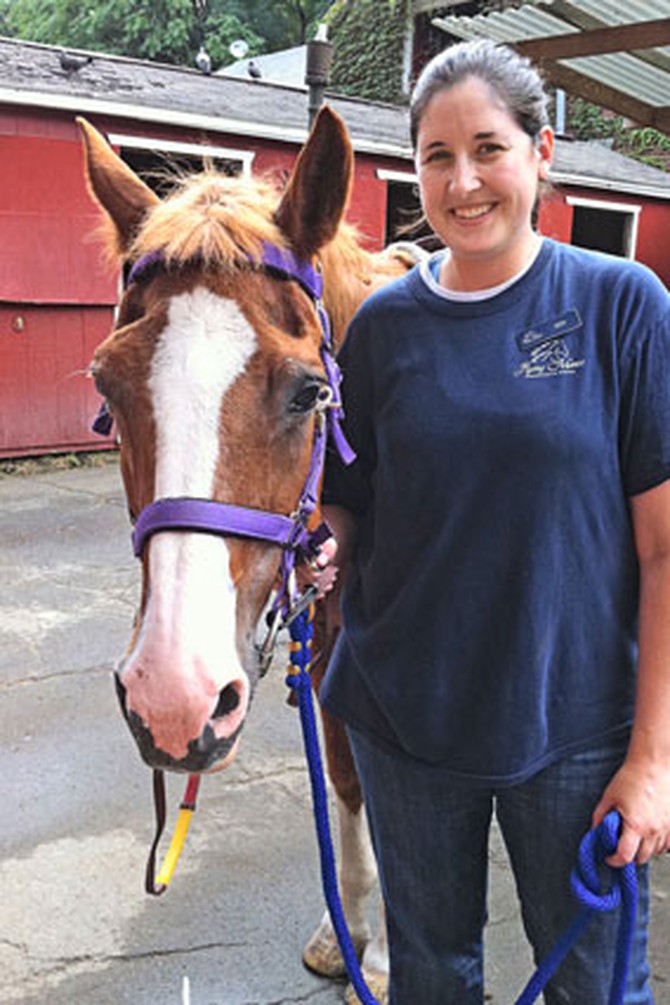
Photo: Hannah Lowe
The Coach: Jennifer Smith
As a kid, I was a horse nut, a real barn rat. I would spend every Saturday at the stables, grooming horses, mucking stalls—anything for extra rides. But when I went to college, my obsession fizzled out. I got a job in book publishing and started spending my days in front of a computer, stuck in my head. I like what I do, but as time passed, I just began to crave something wildly different.
Then, three years ago, I came across a video about horses helping children with disabilities. I felt like it was speaking directly to me. On my first day as a volunteer, I was paired with a 9-year-old girl who had severe developmental and physical disabilities. My job was to walk alongside her for support. When she got in the saddle of a big brown swayback, her face lit up. She couldn't stop laughing! I saw other kids in wheelchairs—kids who spend all day looking up at people—sitting in the saddle and grinning like they were on top of the world. It felt magical. There's no office equivalent, no matter how much you enjoy your day job.
I've since become a certified riding instructor. For six months a year, I'm at the stable on Saturdays from 7 A.M. to 1 P.M. It's something I don't technically have time for—I've missed weekends away with friends, and I schedule "summer" vacations for March because the program starts in April—but you make time for things that matter. —As told to Rachel Bertsche
Then, three years ago, I came across a video about horses helping children with disabilities. I felt like it was speaking directly to me. On my first day as a volunteer, I was paired with a 9-year-old girl who had severe developmental and physical disabilities. My job was to walk alongside her for support. When she got in the saddle of a big brown swayback, her face lit up. She couldn't stop laughing! I saw other kids in wheelchairs—kids who spend all day looking up at people—sitting in the saddle and grinning like they were on top of the world. It felt magical. There's no office equivalent, no matter how much you enjoy your day job.
I've since become a certified riding instructor. For six months a year, I'm at the stable on Saturdays from 7 A.M. to 1 P.M. It's something I don't technically have time for—I've missed weekends away with friends, and I schedule "summer" vacations for March because the program starts in April—but you make time for things that matter. —As told to Rachel Bertsche
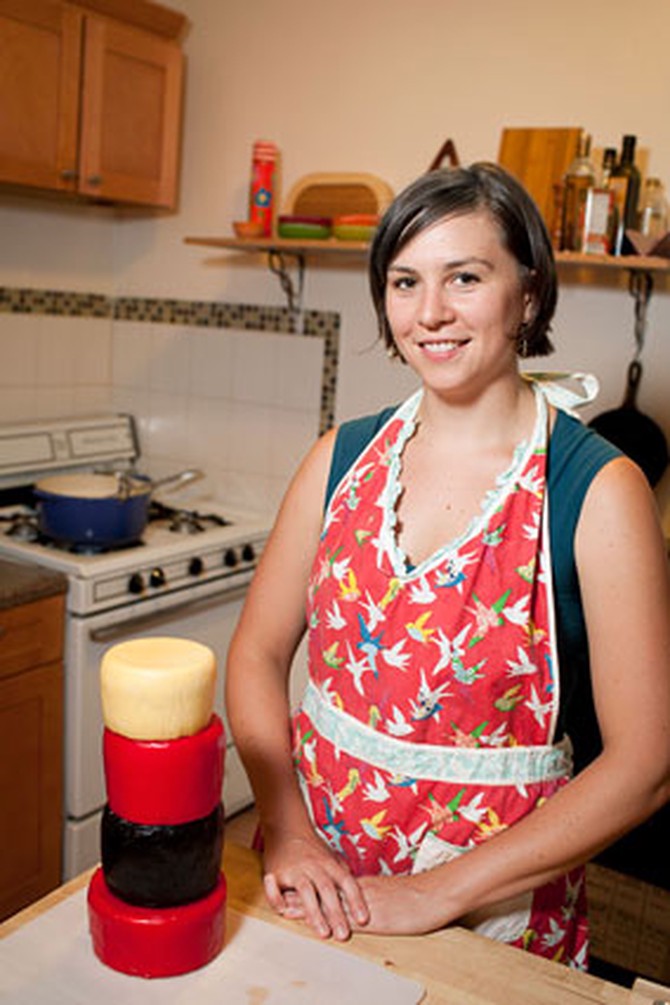
Photo: Andrew Hinderaker
The Cheese-Maker: Elena Santogade
My family is from Wisconsin, so I've always liked cheese, but my interest didn't get intense until a few years ago. I felt antsy at my desk job, so I started a club: Each week a coworker would bring in a few cheeses to share. For my turn, I visited a cheesemonger in a specialty shop. We shared a piece of Appenzeller—sort of like a Gruyère—and I could taste hay and onion. He said, "Oh, the cow must've gotten into an onion patch." I was standing in this busy, fancy shop in New York City and tasting a connection to a cow in Switzerland—it blew my mind.
I started talking to other cheesemongers. They can be a grumpy group, but I'd visit again and again and ask for offbeat offerings. The more I learned, the more I wanted to try crafting simple ingredients into amazing flavors. Making cheese turned out to feel like a big brain stretch. You focus on basic things, like watching milk change, and your mind gets quiet.
My apartment is tiny, but it has become something of a workshop. A kitchen hook drains soft cheeses into the sink. Two small fridges age my wheels of Cheddar and Manchego. I make cheese every week, and I've been teaching mozzarella classes as well, so huge pots and bowls are perched on shelves. Anyone who walks in can tell who I am: I'm a cheesemaker.
—As told to Nicole Frehsee
I started talking to other cheesemongers. They can be a grumpy group, but I'd visit again and again and ask for offbeat offerings. The more I learned, the more I wanted to try crafting simple ingredients into amazing flavors. Making cheese turned out to feel like a big brain stretch. You focus on basic things, like watching milk change, and your mind gets quiet.
My apartment is tiny, but it has become something of a workshop. A kitchen hook drains soft cheeses into the sink. Two small fridges age my wheels of Cheddar and Manchego. I make cheese every week, and I've been teaching mozzarella classes as well, so huge pots and bowls are perched on shelves. Anyone who walks in can tell who I am: I'm a cheesemaker.
—As told to Nicole Frehsee
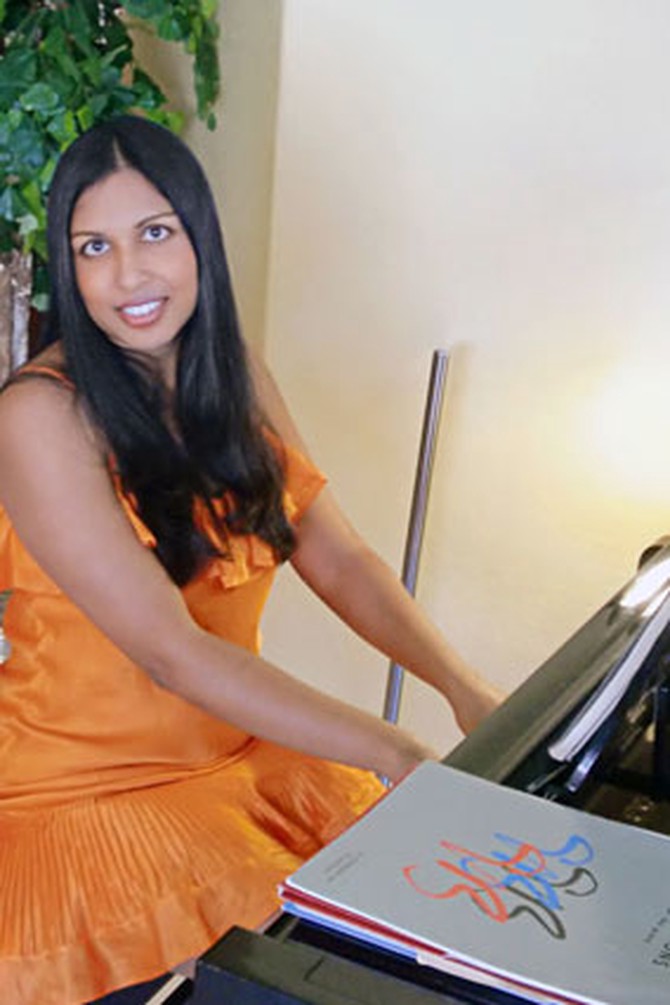
Photo: Mark Carlo
The Pianist: Ria Dawn Carlo
The first time I saw a piano, I was in first grade. My teacher played "When the Saints Go Marching In," and that was it: I wanted to play. When the others ran to recess, I would practice scales. My parents didn't go to church, but I went with my art teacher, to play piano there. I begged for lessons and finally began at age 9. At 11, I told my teachers that I wanted to be a concert pianist. They said the odds were slim, and that I'd have to win the Tchaikovsky Competition—a one-in-a-million shot.
That was pretty discouraging, and as time passed, I grew away from music and instead pursued mathematics. For years I worked as an astrophysicist and had time for little else. But three years ago, when I switched jobs, I found myself thinking of the piano. At age 34, I decided to begin again.
As soon as I sat at the keys, I felt as if I'd entered a room made just for me. In the beginning, I used an electric keyboard and pretended I was on a grand piano. Buying a used Yamaha last year was a real commitment. It makes such a booming sound, my husband and I moved to a bigger apartment so I can play for an hour or two every day. Since I started practicing on my concert grand, I've won an international competition and performed at a fund-raiser at Carnegie Hall. Onstage, I could feel myself filling with light. These are the best moments of my life.
—As told to Diane Herbst
That was pretty discouraging, and as time passed, I grew away from music and instead pursued mathematics. For years I worked as an astrophysicist and had time for little else. But three years ago, when I switched jobs, I found myself thinking of the piano. At age 34, I decided to begin again.
As soon as I sat at the keys, I felt as if I'd entered a room made just for me. In the beginning, I used an electric keyboard and pretended I was on a grand piano. Buying a used Yamaha last year was a real commitment. It makes such a booming sound, my husband and I moved to a bigger apartment so I can play for an hour or two every day. Since I started practicing on my concert grand, I've won an international competition and performed at a fund-raiser at Carnegie Hall. Onstage, I could feel myself filling with light. These are the best moments of my life.
—As told to Diane Herbst

Photo: Leenie Baker
The Farmer: Pattie Baker
The day after 9/11, I found myself at my Atlanta supermarket, staring at peanut butter and bottled water. History has taught that in times of crisis, you have to be able to feed yourself, and I was shocked to see how incapable I was of doing that. I felt overwhelmed and helpless—dependent on that store for getting food to my family's table.
I hoped growing my own food would give me some sense of self-determination in a chaotic world. I started by planting onions outside my kitchen door in three little beds that weren't much of anything. Initially, I was just digging into the dirt, but I wound up digging into my community. A neighbor gave me mint to plant. My family began going to local markets and meeting farmers. When we'd sit down to dinner, the children would say, "Whose beans are these?" or "Whose potatoes are these?" They knew the effort that went into their food. In 2009 I started a community garden that's now 11,600 square feet and 71 members strong.
My garden has grown to a sizable bit of my backyard. I've planted heirloom seeds for vegetables you can't find in the supermarket, like purple beans and lemon cucumber. I work as a writer by day, but now I know I'm a farmer at heart. I feel secure working in my garden. I wake up so excited to get my hands into my little patch of earth. —As told to Margaret Rhodes
I hoped growing my own food would give me some sense of self-determination in a chaotic world. I started by planting onions outside my kitchen door in three little beds that weren't much of anything. Initially, I was just digging into the dirt, but I wound up digging into my community. A neighbor gave me mint to plant. My family began going to local markets and meeting farmers. When we'd sit down to dinner, the children would say, "Whose beans are these?" or "Whose potatoes are these?" They knew the effort that went into their food. In 2009 I started a community garden that's now 11,600 square feet and 71 members strong.
My garden has grown to a sizable bit of my backyard. I've planted heirloom seeds for vegetables you can't find in the supermarket, like purple beans and lemon cucumber. I work as a writer by day, but now I know I'm a farmer at heart. I feel secure working in my garden. I wake up so excited to get my hands into my little patch of earth. —As told to Margaret Rhodes

Photo: Lainie Munro
The Dancer: Liana Munro
I can see myself as a little girl, standing on my father's two-tone shoes, clutching his guayabera as he led us in a salsa. He danced with so much love. In those days, I longed to be a ballerina. But this was Cuba in the mid-1950s—the revolution was under way. Weeks before I was to dance in Cinderella, the theater was bombed.
When I was 13, my parents sent me to school in Jamaica and I stopped ballet. I graduated, got married, and moved to Florida. We had two daughters and they both danced. For years I coordinated recitals and helped with costumes. When my daughters performed, I felt so much joy, as if I were dancing through them. Then they left home, and life revolved around my work in exports. But shortly after I turned 64, two friends happened to ask, "If you could pursue any dream, what would it be?" The answer was dance, of course. I had never stopped loving it. With their encouragement, I started lessons in salsa, rumba, and bolero—Latin dances from my childhood.
Dancing transported me: I couldn't think or worry while my mind was focused on the steps, and my spirit was moved by the rhythms. I'd go to the studio after a stressful day and leave relaxed and happy. Now I dance at least four days a week. My goal isn't to be the best dancer. I just want to dance with passion, the way my father did so many years ago. —As told to Jeryl Brunner
When I was 13, my parents sent me to school in Jamaica and I stopped ballet. I graduated, got married, and moved to Florida. We had two daughters and they both danced. For years I coordinated recitals and helped with costumes. When my daughters performed, I felt so much joy, as if I were dancing through them. Then they left home, and life revolved around my work in exports. But shortly after I turned 64, two friends happened to ask, "If you could pursue any dream, what would it be?" The answer was dance, of course. I had never stopped loving it. With their encouragement, I started lessons in salsa, rumba, and bolero—Latin dances from my childhood.
Dancing transported me: I couldn't think or worry while my mind was focused on the steps, and my spirit was moved by the rhythms. I'd go to the studio after a stressful day and leave relaxed and happy. Now I dance at least four days a week. My goal isn't to be the best dancer. I just want to dance with passion, the way my father did so many years ago. —As told to Jeryl Brunner
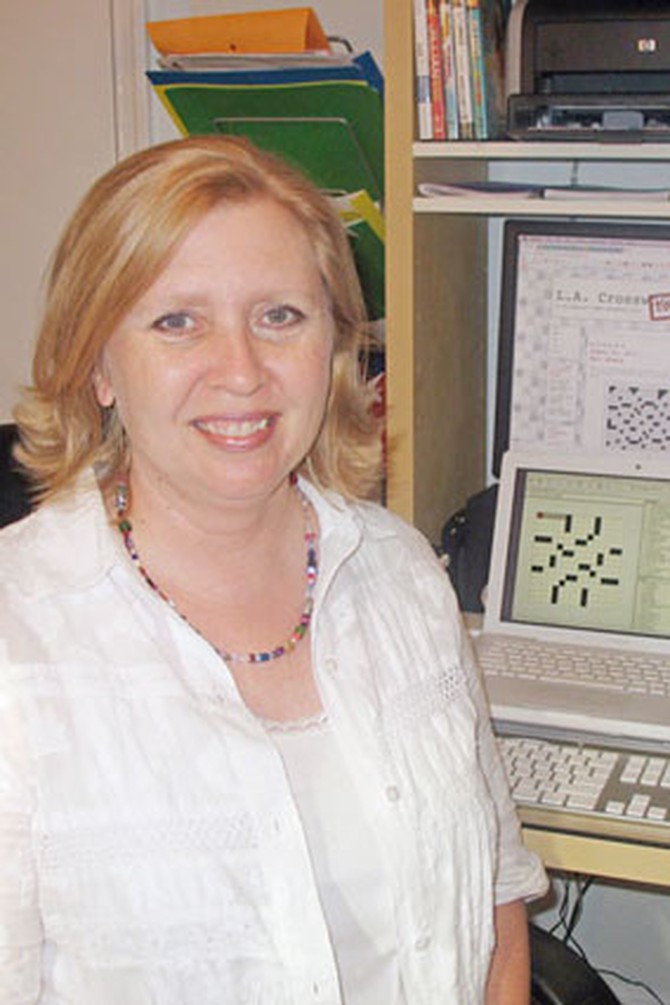
Photo: Rachel Gross
The Puzzler: Angela Halsted
I'm not the type of person who likes to try new things: If there's a new restaurant, I'll usually pass. If I get invited to a party of unfamiliar faces, I'd rather stay home. But at my first crossword tournament, the minute I walked in, I felt a calm I'd never felt before—like I had found my people. It's the way I imagine some feel entering church: This is right, pure and clear.
About six months before, I had started puzzling, and one day I got stuck and took to the Internet for help. I found a bunch of smart and snarky people, and when I learned of the tournaments I thought, "I have to see this for myself."
There were about 700 people at that first one: academics, musicians, elite solvers who had been on Jeopardy!. I knew I could walk up to any of them and have a natural conversation—and that's what I did. A group of us riffed on and on about an obscure opera reference because we all at least knew the composer, the most famous aria, and the characters.
I'm not a recluse—I work as a legal secretary—but I never felt like I fit in with, say, my neighbors. But puzzling is so totally me, and for the people I meet at the few events I fly to each year, it's so totally them. The New York Times crossword comes out online at 10 the night before, and ardent solvers start doing it then. By the time I'm done, I'll have an e-mail, like, "What the hell was 41 across about?" Bliss. —As told to Margaret Rhodes
About six months before, I had started puzzling, and one day I got stuck and took to the Internet for help. I found a bunch of smart and snarky people, and when I learned of the tournaments I thought, "I have to see this for myself."
There were about 700 people at that first one: academics, musicians, elite solvers who had been on Jeopardy!. I knew I could walk up to any of them and have a natural conversation—and that's what I did. A group of us riffed on and on about an obscure opera reference because we all at least knew the composer, the most famous aria, and the characters.
I'm not a recluse—I work as a legal secretary—but I never felt like I fit in with, say, my neighbors. But puzzling is so totally me, and for the people I meet at the few events I fly to each year, it's so totally them. The New York Times crossword comes out online at 10 the night before, and ardent solvers start doing it then. By the time I'm done, I'll have an e-mail, like, "What the hell was 41 across about?" Bliss. —As told to Margaret Rhodes
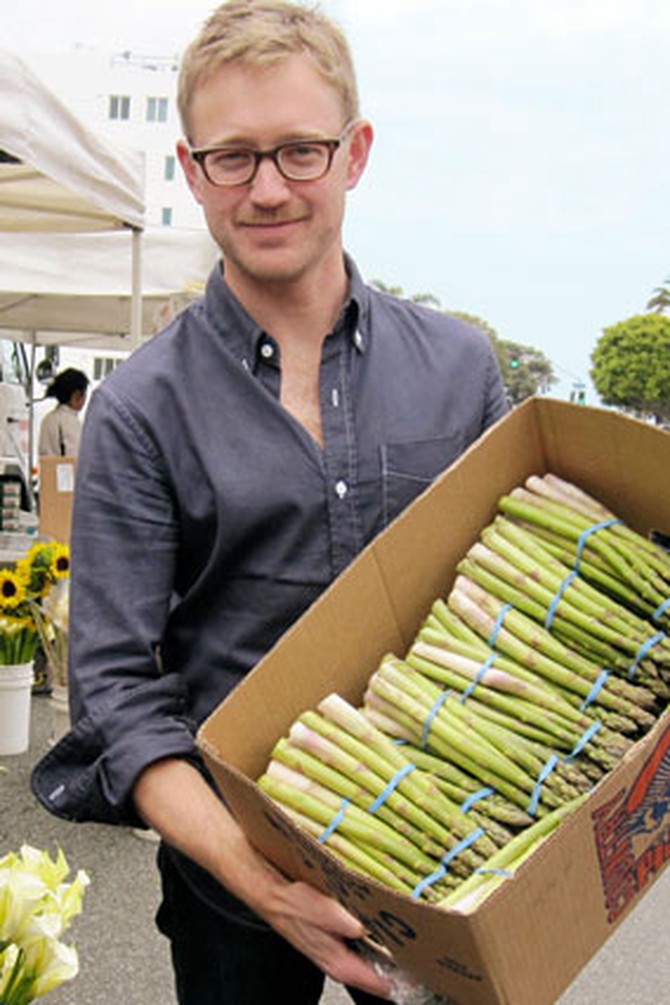
Photo: Valerie Gordon
The Jammer: Kevin West
When I was a boy, I spent summers on my grandparents' farm outside Knoxville, Tennessee. Those were Tom Sawyer summers—running around barefoot, picking fruit from the garden. I loved looking in Gran's pantry, at the jars of homemade jams and pickled beets she'd "put up." After my grandfather died, a developer turned the farmland into housing. It still pains me to think about that.
But a few years ago at a farmers' market in Santa Monica, I got carried away and bought a whole flat of strawberries. I had some notion of making strawberry shortcake for a dinner party. Then I remembered Gran's strawberry jam. I had never put up preserves before but thought, "Why not?" So I made my first batch—and it was disgusting. I hated the flavor and pectin texture, and I threw it away. Then I tried again; the memory of Gran's perfect, pristine jam goaded me on.
Making batch after batch of jam opened a connection to my past that had been dormant for years. What started as a hobby became an obsession. I've made jam every week and sometimes every day for the past two years. I give jars for birthdays, Christmas, thank-yous—any excuse to share it with friends.
A lot of kitchen work is lonely. But when I'm putting stuff up, it's the opposite of lonely. I sense I'm in the company of family memories. Those strawberries I bought on a lark feel like my destiny now. —As told to Margaret Rhodes
But a few years ago at a farmers' market in Santa Monica, I got carried away and bought a whole flat of strawberries. I had some notion of making strawberry shortcake for a dinner party. Then I remembered Gran's strawberry jam. I had never put up preserves before but thought, "Why not?" So I made my first batch—and it was disgusting. I hated the flavor and pectin texture, and I threw it away. Then I tried again; the memory of Gran's perfect, pristine jam goaded me on.
Making batch after batch of jam opened a connection to my past that had been dormant for years. What started as a hobby became an obsession. I've made jam every week and sometimes every day for the past two years. I give jars for birthdays, Christmas, thank-yous—any excuse to share it with friends.
A lot of kitchen work is lonely. But when I'm putting stuff up, it's the opposite of lonely. I sense I'm in the company of family memories. Those strawberries I bought on a lark feel like my destiny now. —As told to Margaret Rhodes
From the November 2011 issue of O, The Oprah Magazine

